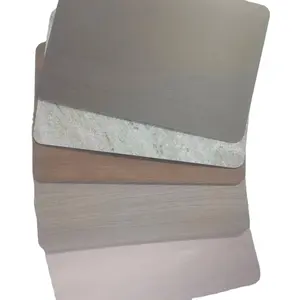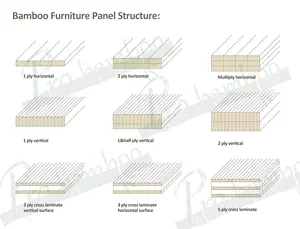

Lasting And Unfading Century Plywood Sheet 4x8 18mm Marine Wood Hpl Laminated Plywood For Kitchen Carcass


Easy To Customized Laser Cutting 3mm 6mm 18mm 20mm 25mm 30mm 40mm Solid Plywood Board For Furniture Making Solid Bamboo Panel






















Treated plywood refers to plywood that has undergone a special treatment process to enhance its durability, resistance to decay, and protection against pests. The treatment involves the application of preservatives or chemicals to the plywood surface or impregnation of the wood fibers.
Different types of treated plywood can be used in different places, depending on their features and handling methods. Pressure-treated plywood is treated under high pressure with preservatives like ACQ, providing excellent resistance to decay. It is suitable for outdoor construction projects, such as decks and patios, stairs and railings, foundation structures, and support columns. Fire-treated plywood is treated with fire-retardant chemicals to enhance fire resistance. It can be used in places requiring fire-resistant properties, including commercial buildings and public spaces, entertainment venues and theaters, cable enclosures, and fire-rated partitions. Weather-treated plywood is treated for improved durability against various weather conditions. It is suitable for outdoor projects, such as exterior wall decorations, outdoor furniture, and structures exposed to frequent outdoor elements. Green-treated plywood utilizes environmentally friendly preservatives, like copper amine formulations. It is ideal for eco-conscious projects, including eco-area development, organic agricultural structures, and green building initiatives.
High-temperature treatment has improved stability and durability, so heat-treated plywood is used in projects requiring enhanced stability, such as flooring, foundation structures, and applications sensitive to temperature fluctuations. CCA-treated plywood is treated with copper, chromium, and arsenic preservatives for robust decay resistance. The treated plywood suits projects requiring strong anti-decay properties, such as underground structures like basements and foundations, piling in marine and wetland environments. However, it's important to note that CCA-treated plywood should be handled and used cautiously, as it contains arsenic, a toxic substance. Proper safety measures should be followed during installation. In some regions, using CCA-treated plywood may be regulated or restricted due to environmental and health concerns.
Effective usage methods of treated plywood are crucial for various construction and woodworking projects. 1. Measurement and planning: Before starting the project, carefully measure and plan the space or structure. Ensure a precise understanding of the required dimensions and shapes. 2. Cutting and adjusting: Adjust the dimensions of treated plywood depending on the project. Use appropriate tools, such as a saw, to ensure a straight cut that meets design requirements. 3. Protection and decay resistance: If the project is used outdoors or in areas prone to moisture, use the appropriately treated plywood to enhance its decay resistance. For exposed edges and cuts, consider using additional preservatives or sealants. 4. Pre-Drilling: When using screws or nails on treated plywood, it's advisable to pre-drill holes. In addition, following safety guidelines when working with treated plywood, wearing appropriate personal protective equipment, and ensuring good ventilation to avoid inhaling potentially harmful vapors are also very important during the processes.